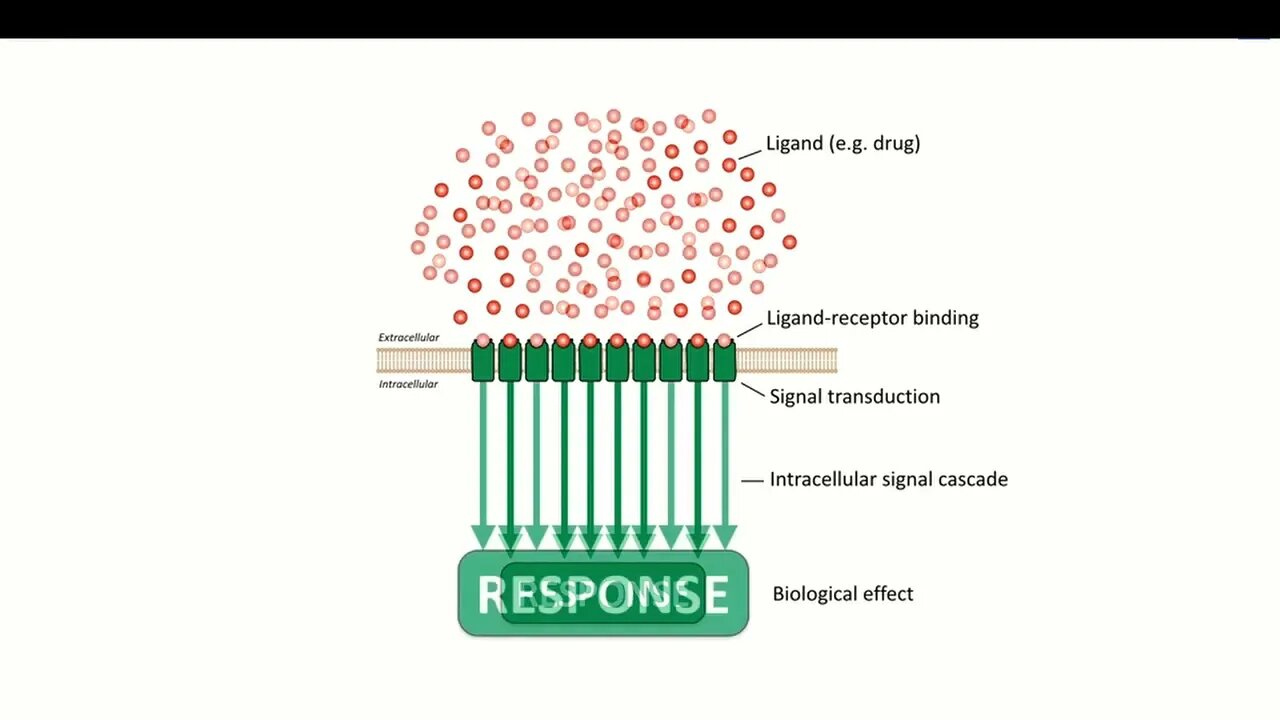Premium Only Content

4 Pharmacodynamics Receptor Agonists and Antagonists
An agonist is a drug that binds to the receptor, producing a similar response to the intended chemical and receptor. Whereas an antagonist is a drug that binds to the receptor either on the primary site, or on another site, which all together stops the receptor from producing a response.
The main difference between these two drugs is that one simulates the intended reaction, where as an antagonist binds to the receptor, and stops/ slows responses. Agonists essentially mimic the activities of normal neurotransmitters such as Acetylcholine, and emulate a similar response from the receptors they bind to. A great analogy to think of is with a vending machine. Usually to buy a drink, you would insert a $1 coin into the machine, and the response is for it to spit out your favourite soda. An agonist in this scenario would be to use a metal disc, of the same size as a coin to insert into the machine, thus using the same coin slot with a mimic coin to obtain a soda.
An antagonist does the opposite of an agonist. It binds to receptors, and stops the receptor from producing a desired response. Going back to the analogy, it’s like jamming the machine’s coin slot so that it is unable to perform its function until the blockage is removed.
–Choose an antagonist, discuss primary inhibitory mechanism and explain in detail how this relates to the way in which it interacts with receptors.– [subject brief as I may change if I can find a more interesting antagonist]
Atropine is a reversible, competitive antagonist of the receptor muscarinic acetylcholine receptors, in language that you and I can understand, it is a removable coin blocker for a vending machine that controls some of our bodily functions, such salivation and heart rate. [image of lock and key-esque model]
Atropine inhibits some of the functions of the parasympathetic system, so it effects things such as heart rate, salivation and pupil dilation. Atropine is used to treat bradycardia, that is slowed heart rate, in patients, and is also used to lower the amount of saliva produced in some specific surgeries.
-
 LIVE
LIVE
GritsGG
4 hours agoRumble Customs! 3515 Ws! 🫡!
551 watching -
 LIVE
LIVE
Grant Stinchfield
1 hour agoHow Local TV News LOST Its Soul
144 watching -
 2:09:51
2:09:51
Badlands Media
12 hours agoBadlands Daily: September 1, 2025
32.4K18 -
 1:12:35
1:12:35
theoriginalmarkz
2 hours agoCoffee with MarkZ. 09/01/2025
33.4K9 -
 2:59:48
2:59:48
Wendy Bell Radio
7 hours agoSunday, Bloody Sunday
96.8K228 -
 1:10:02
1:10:02
crgoodw1n
1 hour agoHAPPY LABOR DAY! Tactical shoosting W/ @BenderOdoyle Ask about !12hr !freshenup !discord
7.67K2 -
 LIVE
LIVE
ENEMYOFDEATH2012
13 hours agoGod of War Playthrough Pt. 2 and some Fortnite
19 watching -
 4:47:50
4:47:50
The Why Files
2 days agoCOMPILATION: UFOs and Aliens Vol.2 | They are NOT our friends
84.3K53 -
 1:33:46
1:33:46
BubbaMatt
2 hours agoMafia Definitive Edition Playthrough - Part 1
26 -
 LIVE
LIVE
Jorba4
1 hour ago🔴Live-Jorba4- The Finals
11 watching